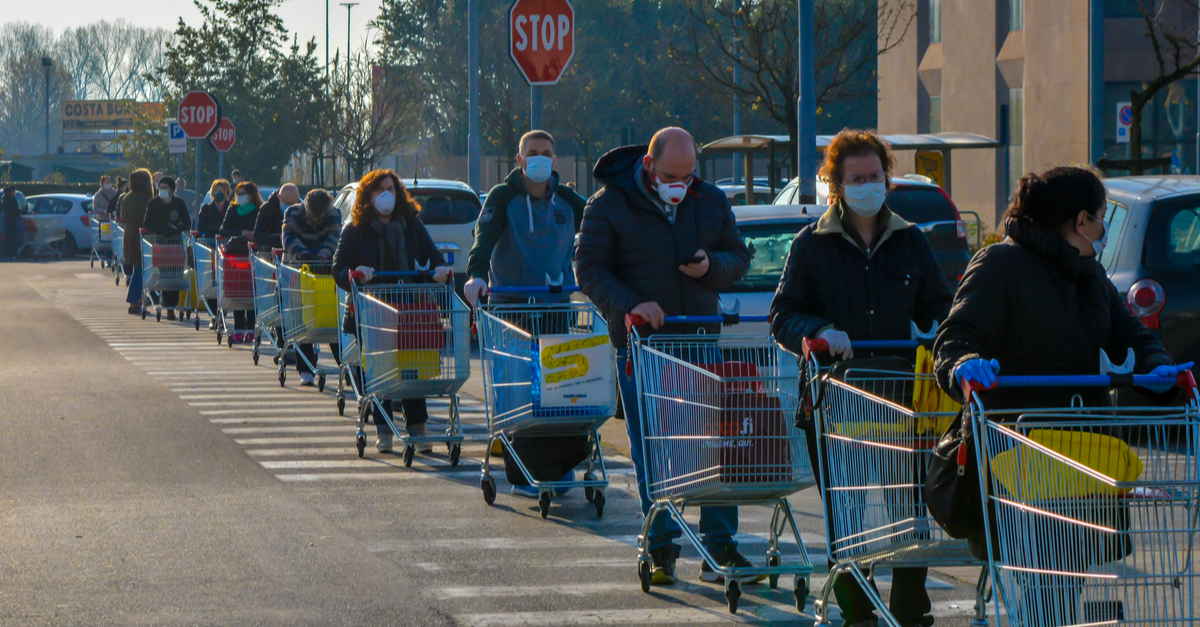




Not so long ago, if someone told me that there would soon come a time where I would need to lock myself in my home, distance myself from other people, and be going out with a mask on my face, I would be extremely concerned for that person.
Not so long ago, if someone told me that there would soon come a time where I would need to lock myself in my home, distance myself from other people, and be going out with a mask on my face, I would be extremely concerned for that person.
Without a doubt, one of the biggest defining global crises of our time and the oddest challenge humanity has faced since World War 2 has to be the coronavirus COVID-19 pandemic. Since its inception, the virus has spread to every continent in the world, with the exception of Antarctica, for now at least. With the world reaching a tragic milestone of 2 million deaths, humanity has still yet to recover from this almost unbearable burden of loss, economic downfall and the heart-breaking disconnection from friends and family, not to mention the psychological effect that could be everlasting. Although the vaccines are being rolled out to various countries, experts believe that it will still be a long time before the world could officially go ‘back to normal’ [1]
The risk of queueing
Ever since this virus was classified as a pandemic and the world started showing the signs of its existence within their own borders, businesses had to act quickly to comply with government rules and restrictions to help prevent its spread. To no surprise, one of the main things this impacted were public gatherings, being almost completely banned in all countries. These were one of the first restrictions due to the necessity of social distancing. This of course heavily impacted the queueing systems and affected the way companies ran their businesses.
The problem that occurs from these restrictions, does not have much to do with the number of people queueing up, but rather with the number of people that can queue up. Because of this many people found themselves not queueing just to be serviced but rather queueing up, to even, enter a store or location, a matter that is completely unsustainable for business, as discussed in our previous blogpost. This has inadvertently caused the length of these queues to become longer and is risking more people to stand in line and exposing themselves to the dangers of being infected, not to mention the time that is wasted, the exhaustion, and the high probability of leaving the queue and walking away all together.
This is where Dorak and the power of Artificial Intelligence and Machine Learning can be utilized and benefitted from to its utmost potential because not only is it allowing people to be able to queue up without physically being there, but it helps reduce the spread of the virus by not exposing people to the risk of catching it. This will also, therefore, help businesses to properly adhere to the government’s regulations and be able to effectively serve their customers in a timely and efficient manner. No business wants to put their customers at risk, or have them dread coming and waiting for service, for long periods of time, or take the chance of having an angry frustrated customer that might never return.
The time spent waiting.
Now that we have highlighted the risk that is involved with physically being in these long queues, lets now highlight the impact CoV19 exerted on the length of time spent being in queues. Because of the restrictions imposed on keep an average of 1.5m social distancing with other people, this has increased the length of time spent being in queues exponentially. And if you are like most people, and you find yourself having to wait hours for a service that will take five to ten minutes to complete, you wouldn’t waste your time going through all that trouble, unless you absolutely have to, even if you will try to make sure you never have to do that again, visiting this business will become one of your most hated things to do.
In 2015, a retail tech firm called Box Technologies found in its report that 86 per cent of people would avoid a location if the queue for that place is too long. Meanwhile another 70 per cent were less likely to return to a location if they have experienced this long waiting times on just one occasion. [2]
Our queueing management system is the best solution for this problem. Not only will your app be waiting in line for you, but you can even schedule a ticket for later, within a specific timeframe, and be served immediately when you arrive. In the meantime, you can go about your day doing other things knowing that your place within the queue is secure, all while getting live updates of your wait time and your position in the line. Isn’t that a dream come true for both businesses and customers? It definitely is!
Want to learn more?
Here are some online articles that have done research on the impact of queueing due to the COVID-19 pandemic.
1. https://www.theatlantic.com/technology/archive/2020/10/the-pandemic-could-end-waiting-in-line/616873/
2. https://www.retailgazette.co.uk/blog/2020/11/long-queues-may-suppress-christmas-demand-can-technology-help/
3. https://www.bbc.com/news/business-52874615
References
[1] A. Powell, “Fauci says herd immunity possible by fall, ‘normality’ by end of 2021,” The Harvard Gazette: Health & Medicine, 10 December 2020.
[2] Box Technologies, “How long does it take to lose a customer?,” Box Technologies Report, 2015.